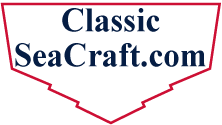
 |
|
#11
|
|||
|
|||
|
Quote:
The blades on an aluminum prop have to be thicker to minimize deflection because aluminum's elastic modulus (stiffness) is only about 1/3 as stiff as SS. In other words an aluminum part will deflect 3X as much as a dimensionally identical steel part with exactly the same load on it! A SS prop with a given pitch and diameter will typically spin a little faster than it's aluminum twin because of the difference in blade thickness. An aluminum prop is easy to modify if it needs to be tweaked to really dial it in. A good shop can repitch it to a lower pitch if it doesn't turn enough rpm or add some cup or more pitch if it over revs. That way you can get it dialed in just right before spending big $ for a SS version. (Make sure you test with at least as much load as you normally intend to carry. I always test with full gas tank, full live well and galley seat water jug, plus 65 and 70 qt coolers filled with sea water for ballast, because I run pretty heavy when diving or cruising.) I would also pay attention to min planing speed, because there are times when running offshore, that it's nice to be able to slow down but hang on plane to keep from beating up your passengers. (This is much more important on a much lighter 20, which tends to start going airborne at about 20 kts when seas get over 3'!)
__________________
'72 SeaFari/150E-Tec/Hermco Bracket, owned since 1975. http://i188.photobucket.com/albums/z...Part2019-1.jpg |
|
|